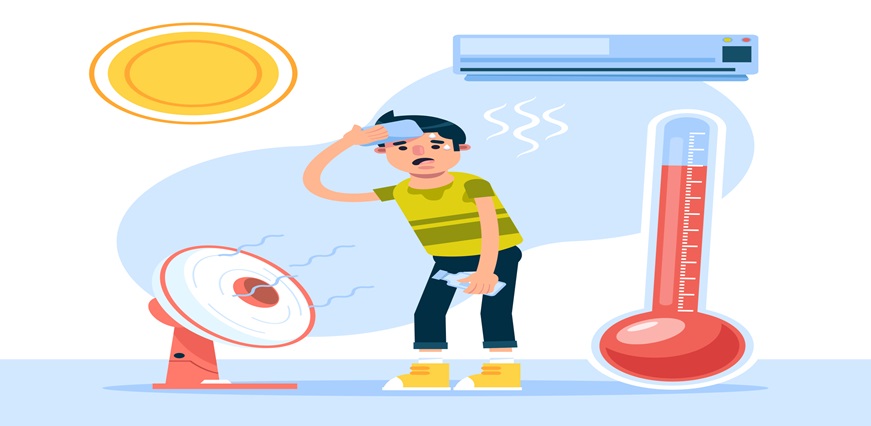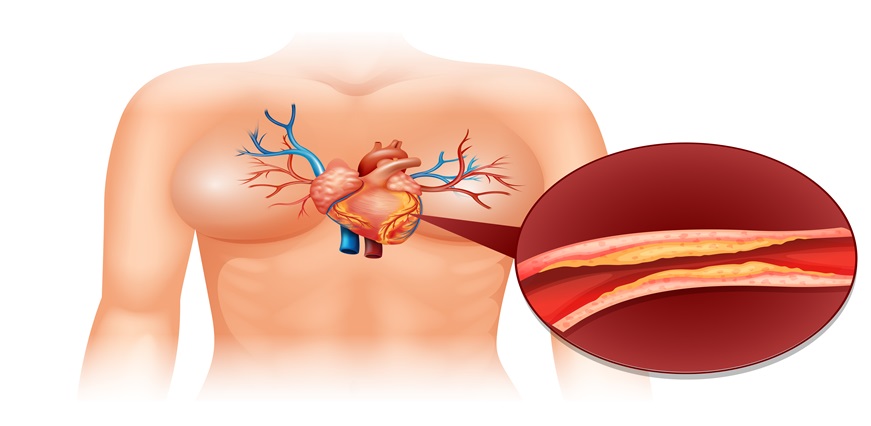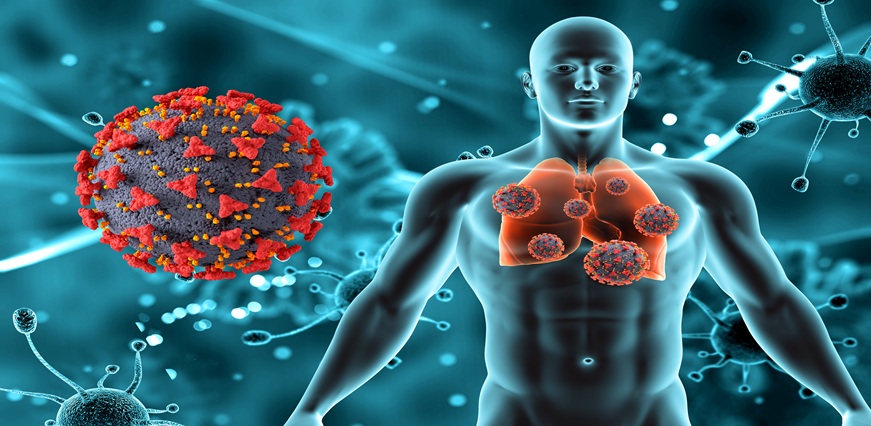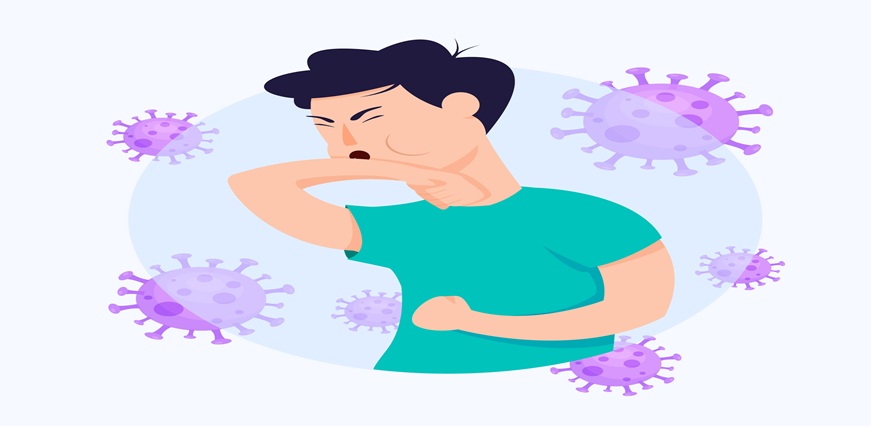A developmental disorder that impacts behaviour and communication is autism spectrum disorder (ASD). It is characterized by difficulties with social interaction, repetitive behaviors, and speech and nonverbal communication. ASD can range from mild to severe and can cause significant impairment in functioning ASD is thought to be brought on by a confluence of genetic and environmental variables but has no single known cause. Treatment for ASD typically includes behavioral therapy, speech therapy, and medication. There is no cure for ASD, but early intervention can help improve outcome. If you or someone you know is showing signs of ASD, it is important to seek professional help. In this blog post, we will explore the causes, symptoms, treatment, and prevention of ASD.
What is Autism Spectrum Disorder?
Autism spectrum disorder (ASD) is a complex developmental disorder that affects a person’s ability to communicate and interact with others. It is characterized by repetitive behaviors as well as difficulties with social interaction, verbal and nonverbal communication.
ASD can be mild, moderate or severe. Some people with ASD are able to live relatively normal lives, while others may need constant support and care. There is no cure for ASD, but there are treatments that can help manage the symptoms.
Although the precise origin of ASD is unknown, a mix of genetic and environmental factors are thought to be responsible. Some research suggests that ASD may be linked to certain medical conditions, such as Fragile X syndrome or tuberous sclerosis.
Symptoms of ASD typically appear during early childhood, though they may not be diagnosed until later in life. The symptoms can vary greatly from person to person and range from mild to severe.
Some common symptoms of ASD include:
- Repetitive behaviors (e.g., hand-flapping, spinning)
- Difficulty with social interactions (e.g., avoiding eye contact, preferring to be alone)
- Difficulty with communication (e.g., trouble holding a conversation, not understanding nonverbal cues)
- Unusual interests or fixations (e.g., intensely focused on one topic)
There is no single test that can diagnose ASD. Diagnosis is based on observing behavior and assessing.
What Are the Types of Autism Spectrum Disorders?
There are several types of autism spectrum disorders, each with its own set of symptoms.
Autistic disorder, also called classic autism or Kanner’s autism, is the most severe form of ASD. It is characterized by impaired social interaction, problems with verbal and nonverbal communication, and restricted and repetitive behaviors. Children with autistic disorder typically have significant difficulties in school and may be unable to live independently as adults.
Asperger’s syndrome is a less severe form of ASD characterized by similar impairments in social interaction and communication, but without the same level of delays or impairment in cognitive development and intellectual functioning. Individuals with Asperger’s syndrome often have above-average intelligence and excel in narrow interests or abilities. While they may have difficulty with social skills, they do not typically experience the same level of problems in daily living skills as those with autistic disorder.
Pervasive developmental disorder not otherwise specified (PDD-NOS), also called atypical autism, is diagnosed when an individual meets some but not all of the criteria for autistic disorder or Asperger’s syndrome. PDD-NOS is considered to be on the milder end of the autism spectrum.
Rett syndrome is a rare genetic disorder that primarily affects girls and causes problems with brain development, resulting in impaired social interaction, communication, and movement. Rett syndrome typically begins to show symptoms around 6 to 18 months of age after a period of
Asperger's syndrome
Asperger's syndrome is a type of autism spectrum disorder that is characterized by difficulties in social interaction and nonverbal communication, as well as restricted and repetitive patterns of behavior and interests. People with Asperger's syndrome often have difficulty understanding the social cues and body language of others, and they may also have trouble making eye contact or engaging in small talk. However, they typically do not have the same level of delay or disability in language development as those with other types of ASD.
People with Asperger's syndrome may be extremely intelligent and have high levels of verbal ability, but they may also be very literal in their use of language. They may have a hard time understanding idiomatic expressions, jokes, or sarcasm. They may also take things very literally and have difficulty understanding abstract concepts.
People with Asperger's syndrome often become obsessed with one or two particular subjects and can talk endlessly about their area of interest. They may seem clumsy or awkward in their movements, and they may have an unusual way of speaking.
There is no cure for Asperger's syndrome, but there are treatments that can help people manage the symptoms and improve their quality of life. Early diagnosis and intervention are important for people with Asperger's syndrome.
Autistic disorder
Autistic disorder, or autism, is a neurodevelopmental disorder characterized by social and communication deficits and repetitive behaviors. Autism spectrum disorder (ASD) is a term used to describe a range of similar neurodevelopmental disorders, including autistic disorder, Asperger’s syndrome, and pervasive developmental disorder-not otherwise specified (PDD-NOS).
Although the exact aetiology of ASD is unknown, it is thought to be a result of both hereditary and environmental factors. ASD affects males more than females. The symptoms of ASD typically appear before the age of three. The most common symptom of ASD is impaired social interaction. People with ASD may have difficulty making eye contact, carrying on a conversation, or understanding nonverbal cues such as body language or facial expressions.
Other symptoms of ASD include repetitive behaviors and restricted interests. People with ASD may engage in repetitive movements such as hand flapping or spinning, or they may fixate on certain objects or topics to the exclusion of others. Some people with ASD also have sensory processing difficulties which can make everyday sounds, lights, or textures overwhelming or uncomfortable.
There is no one-size-fits-all treatment for ASD, but there are evidence-based interventions that can improve symptoms and help people with ASD lead meaningful lives. Applied behavior analysis (ABA) is the most widely researched and proven effective intervention for ASD. ABA involves using positive reinforcement to encourage desired behaviors and reduce problem behaviors. Other interventions include speech therapy,
Childhood disintegrative disorder
Childhood disintegrative disorder, also known as CDD, is a rare autism spectrum disorder that is characterized by a marked regression in cognitive, social, and language skills. This regression typically occurs between the ages of 2-10 years old.
CDD was first described in the early 1900s and was initially thought to be a variant of schizophrenia. However, it is now recognized as a distinct condition. The exact cause of CDD is unknown but there are several theories that have been proposed, including genetic factors, exposure to toxins or infections, and problems with brain development.
Symptoms of CDD include:
- Loss of previously acquired skills in social interaction, communication, and imaginative play
- Decreased interest in peers and decreased ability to relate to others
- Lack of eye contact
- Abnormalities in speech and language development
- Aggressive or self-injurious behavior
- Restrictive interests and repetitive behaviors
The diagnosis of CDD is made based on the presence of the above symptoms and a detailed assessment by a qualified professional. There is no specific treatment for CDD but interventions can be used to help improve symptoms. These may include behavioral therapy, speech therapy, occupational therapy, and medication management.
Pervasive developmental disorder
Pervasive developmental disorder (PDD) is a term used to describe a group of disorders that affect a person’s ability to communicate and interact with others. PDD includes autism spectrum disorder (ASD) and other similar conditions.
ASD is the most well-known PDD. In the US, 1 in 68 kids are thought to have ASD. People with ASD have a hard time communicating and interacting with others. They could also engage in repeated activities or pursuits.
Most people with ASD are diagnosed in early childhood, although some people may not be diagnosed until later in life. ASD is thought to be brought on by a combination of genetic and environmental factors; there is no single known cause.
Although there is no known treatment for ASD, there are methods that can help with symptoms and general well-being. Early intervention is important for people with ASD. Treatment may include behavioral therapy, speech therapy, occupational therapy, and medication.
If you are concerned that your child may have ASD, talk to your child’s doctor about your concerns.
What Causes Autism Spectrum Disorder?
The Autism Spectrum Disorder Foundation lists the following as possible causes of ASD:
- Genetics: Research suggests that ASD can be caused by a combination of genetic and environmental factors. Some genes have been identified as being associated with an increased risk for ASD, but no single gene has been proven to cause ASD.
- Environmental factors: Studies are currently underway to explore whether certain exposure to toxins during pregnancy or after birth can increase the risk for developing ASD.
- Brain differences: Differences in certain areas of the brain have been observed in people with ASD, compared to those without ASD. It is not yet known what causes these differences.
Signs and Symptoms of Autism Spectrum Disorder
A complex developmental impairment known as autism spectrum disorder (ASD) can present serious social, communicative, and behavioural difficulties. There is no one single cause for ASD. However, research suggests that it’s caused by a combination of genetic and environmental factors.
Most children with ASD show signs of the disorder before they turn three years old. Some common signs and symptoms include:
- Delayed speech and language skills
- Repeating words or phrases over and over (echolalia)
- Difficulty holding a conversation
- Not responding to their name being called
- Avoids eye contact or gives improper eye contact
- preferring not to be held or cuddled
- Difficulty understanding other people’s feelings or talking about their own emotions
- Acting impulsively and not thinking about possible consequences of their actions
Social communication and interaction
It is estimated that 1 in 59 children has been diagnosed with autism spectrum disorder (ASD) according to the Centers for Disease Control and Prevention. ASD is a neurodevelopmental disease that can impair social interaction, verbal and written communication, and behaviour. The symptoms of ASD can be mild or severe and can vary from person to person.
Most people with ASD have difficulty with social interaction and communication. They may not make eye contact or they may avoid talking to others. When they do talk, they may not be able to start or keep a conversation going. They may say the same thing over and over again or they may talk about only one topic that interests them. People with ASD also have trouble understanding nonverbal communication such as body language, facial expressions, and tone of voice. This can make it hard for them to know when someone is joking, being sarcastic, or flirting.
People with ASD may also have difficulty understanding other people’s feelings or taking turns in conversations. They may act inappropriately by interrupting others or by saying things without thinking about how their words might hurt someone’s feelings. Some people with ASD seem to be insensitive to pain and touch. Others are hypersensitive to sound, light, taste, smell, or touch.
Many people with ASD also have repetitive behaviors such as repeating certain words or phrases, rocking back and forth, or flapping their hands. These behaviors can be calming for some people with ASD but frustrating for others
Patterns of behavior
There are many behaviors that can be associated with autism spectrum disorder, but not all people with ASD will display all of them. Some common patterns of behavior include:
- Repetitive behaviors: such as rocking back and forth, flapping their hands, or repeating certain phrases
- Difficulty with social interaction: they may avoid eye contact, have trouble understanding nonverbal cues (such as body language or tone of voice), or prefer to be alone
- difficulty with communication: they may have trouble speaking or understanding others, or use repetitive speech patterns
- inflexible thinking: they may get “stuck” on certain topics or ideas and have difficulty moving on to something else.
Diagnosis of Autism Spectrum Disorder
Most children with ASD are diagnosed by age 4 or 5. A diagnosis may be suggested by developmental delays in communication and social skills, unusual behaviors, or both.
A comprehensive evaluation for ASD usually includes:
- A review of the child’s medical history, including any possible risk factors
- An observation of the child’s behavior
- A conversation on the parents' worries
- Developmental screening tests
- Autism-specific diagnostic tools such as the Autism Diagnostic Interview—Revised (ADI-R) or Autism Diagnostic Observation Schedule—Generic (ADOS-G).
After completing a comprehensive evaluation, a team of specialists will work with the parents to develop a treatment plan.
With our offerings in line with government-mandated prices, Maxlab offers full body checkup packages that cover an exhaustive list of tests for a comprehensive diagnosis of your health. Choose from a range of health test packages based on your needs.
Diagnosis of Autism Spectrum Disorder in Kids
There is no one autism test, but doctors look at the child’s behavior and development to make a diagnosis.
At 18 months or younger, autism spectrum disorder (ASD) can occasionally be identified. A skilled professional's diagnosis by the age of two is quite dependable. However, a lot of kids don't get a definitive diagnosis until they're considerably older.
Signs and symptoms of autism spectrum disorder are often present from an early age, but they may not be recognized as ASD until later when the child begins to lag in typical development or when social, behavioral, or communication problems become more obvious.
Some kids with ASD show hints of future problems within the first few months of life. In others, behaviors become apparent as the child grows older. Often, signs and symptoms become more noticeable when demands on the child’s social and communication skills increase, such as during puberty or when they start school.
A diagnosis of ASD usually requires a comprehensive evaluation that includes:
- A thorough developmental history
- An observation of the child’s behavior
- A review of any available educational, medical, and psychological records
- Autism-specific screenings or tools
- Information from parents or caregivers about their concerns
Parents or caregivers who notice any early warning signs should talk with their child’s doctor immediately.
Diagnosis of Autism Spectrum Disorder in older children
A neurodevelopmental illness that impacts communication and social interaction is autism spectrum disorder (ASD). It is characterized by repetitive behaviors, difficulties with social and communication skills, and restricted interests.
ASD can be diagnosed in older children, though it is typically diagnosed in early childhood. Diagnosis of ASD can be difficult, as there is no single diagnostic test for the disorder. Rather, diagnosis is based on clinical observation of the child’s behavior and development.
There are several assessment tools that can be used to diagnose ASD. These include the Autism Diagnostic Observation Schedule (ADOS), the Autism Diagnostic Interview-Revised (ADI-R), and the Childhood Autism Rating Scale (CARS). Diagnosis also requires a comprehensive developmental evaluation, which may include cognitive testing, speech and language assessments, and occupational therapy evaluations.
Once a diagnosis of ASD has been made, early intervention services can be started. Early intervention is critical for children with ASD, as it can help them develop the skills they need to function in society.
Diagnosis of Autism Spectrum Disorder in adults
There is no one test to diagnose autism spectrum disorder (ASD), but the diagnosis usually involves:
- A comprehensive developmental evaluation by a team of specialists
- Autism-specific behavioral assessments
- Genetic testing, if indicated
- Medical tests to rule out other conditions with similar symptoms
The diagnosis of ASD in adults can be challenging, as many adults with ASD do not seek out services or support. They may not be aware that they have ASD or they may not want to disclose their symptoms. Adults with ASD who seek out services typically do so because of social difficulties, problems at work, or difficulty coping with stress.
Treatment of Autism Spectrum Disorder
There is no one-size-fits-all approach to treating ASD, but there are a number of effective interventions that can help improve symptoms and quality of life. The most important thing is to start early, as soon as a diagnosis is made.
Interventions fall into two broad categories:
Behavioral therapy: This type of therapy helps children with ASD learn new skills and behaviors, and manage difficult behaviors. It can be done in one-on-one sessions or in small groups.
Examples of behavioral therapies include Applied Behavioral Analysis (ABA), social skills training, and speech therapy.
Medical treatment: There are a number of medications that can help people with ASD manage their symptoms. For example, antidepressants may be prescribed to help with anxiety or obsessive-compulsive behaviors. Anti-psychotic medications may be helpful for people who experience hallucinations or delusions. And seizure medication may be necessary for those who have seizures.
It’s important to work with a team of professionals when developing a treatment plan for ASD. This team should include doctors, therapists, counselors, and educators who are experienced in working with people on the spectrum.
Therapies for Autism Spectrum Disorder
Autism spectrum disorder (ASD) is a developmental disability that can cause significant social, communication and behavioral challenges. There is no single cause for it, but it is believed to be caused by a combination of genetic and environmental factors.
There is no cure for ASD, but there are a number of therapies that can help people with ASD manage their symptoms and improve their quality of life. The most effective treatments are those that focus on the individual's strengths and weaknesses and address the core symptoms of ASD.
Some common therapies for ASD include:
- Applied behavior analysis (ABA): ABA is a type of therapy that focuses on changing specific behaviors. It has been shown to be effective in reducing problem behaviors and improving social and communication skills in people with ASD.
- Social skill development: People with ASD can learn how to engage with others with the help of social skill development. It can includes activities such as role-playing, attending social events, and learning how to start and maintain conversations.
- Speech therapy: Speech therapy can help people with ASD develop clearer speech or learn alternative ways to communicate if they are nonverbal. Therapy may also focus on teaching social skills such as turn-taking and eye contact.
- Occupational therapy: Occupational therapy helps people with ASD develop the skills they need to function independently in daily life. This may include activities such as dressing, eating, using the bathroom, and grooming.
Risk Factors of Autism Spectrum Disorder
There are a number of risk factors that have been associated with autism spectrum disorder. These include:
- Genetic disposition: there is believed to be a strong genetic element to ASD, with many cases being linked to specific genes.
- Environmental factors: exposure to certain environmental toxins has been linked to an increased risk of ASD.
- Prenatal exposure to alcohol or drugs: his can increase the likelihood of developing ASD.
- Premature birth: babies who are born prematurely are more likely to develop ASD than those who are born full-term.
- Male gender: boys are four times more likely to be diagnosed with ASD than girls.
Complication of Autism Spectrum Disorder
There are a number of possible complications associated with autism spectrum disorder (ASD). These can include difficulties with communication and social interaction, repetitive behaviors, and intellectual disability. In some cases, people with ASD may also experience anxiety, depression, or other mental health conditions.
left untreated, ASD can lead to a number of serious complications. These can include problems with mental health, employment, education, and relationships. In severe cases, people with ASD may be at risk for self-injury or even suicide.
What support is available for autistic people?
There are many different types of support available for autistic people and their families. Some of the most common include:
- Autism Speaks: This organization provides resources and support for those affected by autism, as well as their families. They offer a variety of programs and services, including early intervention, educational resources, and financial assistance.
- Autism Society: This organization is dedicated to improving the lives of those affected by autism. They offer a variety of resources and support services, including social skills training, financial assistance, and respite care.
- Local Autism Resources: Many communities have local organizations that provide support for autistic people and their families. These organizations may offer a variety of services, such as social skills training, financial assistance, respite care, and more.
- Support groups: There are many different types of support groups available for autistic people and their families. These groups can provide emotional support, practical advice, and peer-to-peer networking opportunities.
Can diet have an impact on autism?
Diet can have an impact on autism. A diet high in processed foods and sugar can contribute to inflammation in the body, which can in turn worsen autism symptoms. A nutritious, balanced diet is important for everyone, but it may be especially beneficial for people with autism. Some research suggests that certain nutrients may help reduce autism symptoms, although more research is needed. omega-3 fatty acids, vitamin D, magnesium, and zinc all have been linked with reducing symptoms of autism.
How does autism affect kids?
Most children with autism have difficulty communicating and interacting with others. They may repeat certain behaviors and might not want to change their daily routines.
Some children with autism are nonverbal and have trouble using spoken language, while others may speak but have difficulty carrying on a conversation. Many kids with autism also struggle with sensory processing. They might be hypersensitive to sound, touch, taste, smell, or light. Some might seek out intense stimulation by spinning objects or flapping their hands. Others might avoid any type of sensation by withdrawing from people and covering their ears or eyes.
How does autism affect girls?
Autism spectrum disorder (ASD) is a neurodevelopmental disorder that affects girls and boys in different ways.
Girls with ASD may be more likely to have social and communication difficulties and repetitive behaviors than boys with ASD. They may also be more likely to have certain medical conditions, such as seizure disorders and sleep problems.
Most experts believe that the reason for these differences is that girls with ASD tend to have higher levels of the hormone testosterone than boys with ASD. This difference in hormone levels may affect brain development and how the brain processes information.
Some girls with ASD may not be diagnosed until they are older because they may be better able to mask their symptoms or compensate for their challenges. This can make it difficult to get the early intervention and support that girls with ASD need.
How does autism affect adults?
Autism can have a profound effect on adults, both in terms of their ability to function independently and their social interactions. Many adults with autism are able to live relatively independent lives, but may need assistance with things like employment, housing, and financial management. Others may require more intensive support, including around-the-clock care.
Most adults with autism have difficulty with social interactions. This can manifest itself in a number of ways, from avoiding eye contact and conversation to being overly literal or honest. As a result, many adults with autism find it hard to make and keep friends. They may also struggle to form romantic relationships.
While there is no cure for autism, there are treatments that can help lessen its effects. These include behavioral therapies, speech and language therapies, and educational interventions. Many adults with autism also find that they benefit from medication, particularly if they have associated mental health conditions like anxiety or depression.
What is the difference between autism and ADHD?
There are many similarities between autism and ADHD, as they are both neurodevelopmental disorders. However, there are also some key differences. Autism is characterized by deficits in social communication and interaction, while ADHD is characterized by problems with attention, hyperactivity, and impulsivity.
A complicated neurological condition called autism spectrum disorder (ASD) impairs a person's capacity for social interaction and communications. ASD symptoms can range from mild to severe, and people with ASD often have difficulty with social interactions, repetitious behaviors, and sensitivities to certain sensory stimuli.
Attention-deficit/hyperactivity disorder (ADHD) is a neurodevelopmental disorder that affects a person’s ability to focus and pay attention. People with ADHD may also be overly active and impulsive. While the symptoms of ASD and ADHD can overlap, the two disorders are distinct.













 7982100200
7982100200
























 To reach our help desk call 9213188888
To reach our help desk call 9213188888.png)
Comments